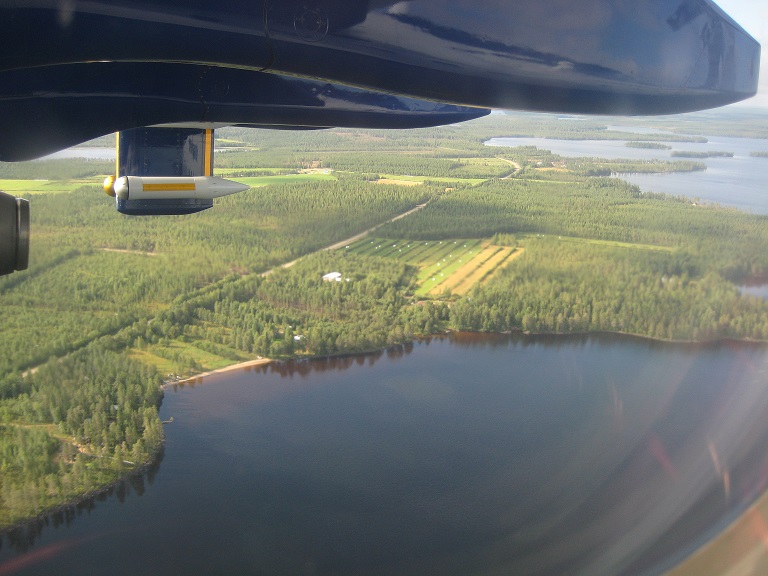Greenhouse gas levels and globally averaged surface temperatures are both on the rise. Whilst slow increases in temperatures are not easily perceived as threatening, and might even be welcomed by some, climate change can also include fast and sudden changes. These sudden changes could have disastrous effect on not only us humans, but also life on this planet more generally. When it comes to places that can trigger sudden changes in Earth’s climate, not all areas are equal in our global neighbourhood.
The Arctic is one such special place where, once the climate is nudged into a warmer regime, the warming can rapidly accelerate due to several positive feedback mechanisms that can push the climate to extremes over a period of decades. These feedback mechanisms can be thought of as self-strengthening vicious cycles, in which small initial changes are quickly amplified. And big changes in the Arctic will have repercussions for the whole global climate.

During the Methane in the Arctic -Measurements and Modelling (MAMM) project, the FAAM BAe-146 aircraft flew over different land types in the Arctic, including some agricultural land. (Credit: Jennifer Muller)
One such feedback mechanism is Arctic sea ice loss, which has already been shown to have accelerated over the last few decades. Here, bright sea ice that previously reflected sunlight, now melts and reveals a darker ocean that can absorb more sunlight and heat, lowering the albedo (reflective capacity) of the Arctic. That heat can then go onto melt more ice, reveal more ocean surface and so on. Another such self-reinforcing mechanism is the release of the greenhouse gas methane (CH4). As a greenhouse gas, methane is 25 times more potent than carbon dioxide, and its release from soils, for example, in warmer Arctic conditions leads to an increase in atmospheric methane. More methane in the air absorbs more heat, which leads to extra warming, which can then, in turn, increase methane release from soils.
Methane comes from several natural sources in the Arctic: gas hydrates, lakes, wildfires, permafrost soils and wetlands all release methane, and the intensity and timing of the release varies between the different sources. To make reliable predictions of the impact of methane release on the climate now and in the future, more information and measurements are needed as input for global models. Sources such as wetlands are strongly influenced by temperature, and have distinct seasonal cycles. Sustained change in Arctic land areas have already been observed and earlier snowmelts, longer growing seasons and record high temperatures of permafrost soils are already happening and can be expected to change the rate and timing of methane release.
Temperatures need to reach a certain level for plants and microorganisms to be able to metabolise, sustain themselves and grow. Their metabolic rate goes up with increasing temperatures (up to an optimal temperature, after which it drops again) and because plants and microbes operate at their lower metabolic limit in the typical cool Arctic summer, even a small change in warmth can have a big effect on biological activity. This means that a small temperature increase makes soil microbes more effective at producing methane in Arctic wetlands. These wetlands make up a large proportion (about 60%) of the Arctic land area and as the Earth warms up, these wetland regions present a potentially large source of methane.

Aircraft overpass over one of the ground measurement sites in the European Arctic. (Credit: Jennifer Muller)
The methane from Arctic wetlands is of particular interest to the UK research project MAMM (“Methane in the Arctic – Measurements and Modelling”), which aims to better understand and quantify the Arctic methane feedback cycle. To do this, an array of measurements are currently being made in the European part of the Arctic circle. At a few fixed locations, methane emission rates are measured in the wetlands by placing chambers, which are open at the base, onto the ground and measuring how fast they “fill up” with methane. Larger scale differences will be detected by ground-level methane concentration measurements along North-South transects that are a few hundred kilometres long.
The UK’s largest research aircraft is also flying over the whole region to survey the distribution and strength of methane sources. There are several instruments on board that measure methane and other greenhouse gases, and we have just finished the August campaign, which included several flights over the Arctic wetlands. We flew a ladder shaped pattern to maximise spatial coverage within the available flying time of 5 hours. We managed to fly this same pattern in the morning as well as the afternoon, and because the temperature changes during the day, the morning and afternoon data will allow us to check for any temperature effects on methane release. To distinguish the wetland methane from other sources, such as emissions from industry and fossil fuels, we can analyse the methane’s isotopic ratio, which acts like a fingerprint for a particular methane source. After analysis, we will use computer modelling to link the ground-based data with the regional aircraft data to paint a picture of how much methane is released from the entire European Arctic and pinpoint the regions responsible for the most methane release.
By Jennifer Muller, University of Manchester
To find out more about Arctic methane, the MAMM research project, how the MAMM team got on during the August campaign and what’s planned for September, either in the remote wetlands or up in the air on the aircraft, check out the MAMM blog and listen to field audio diaries by the Barometer Podcast.

